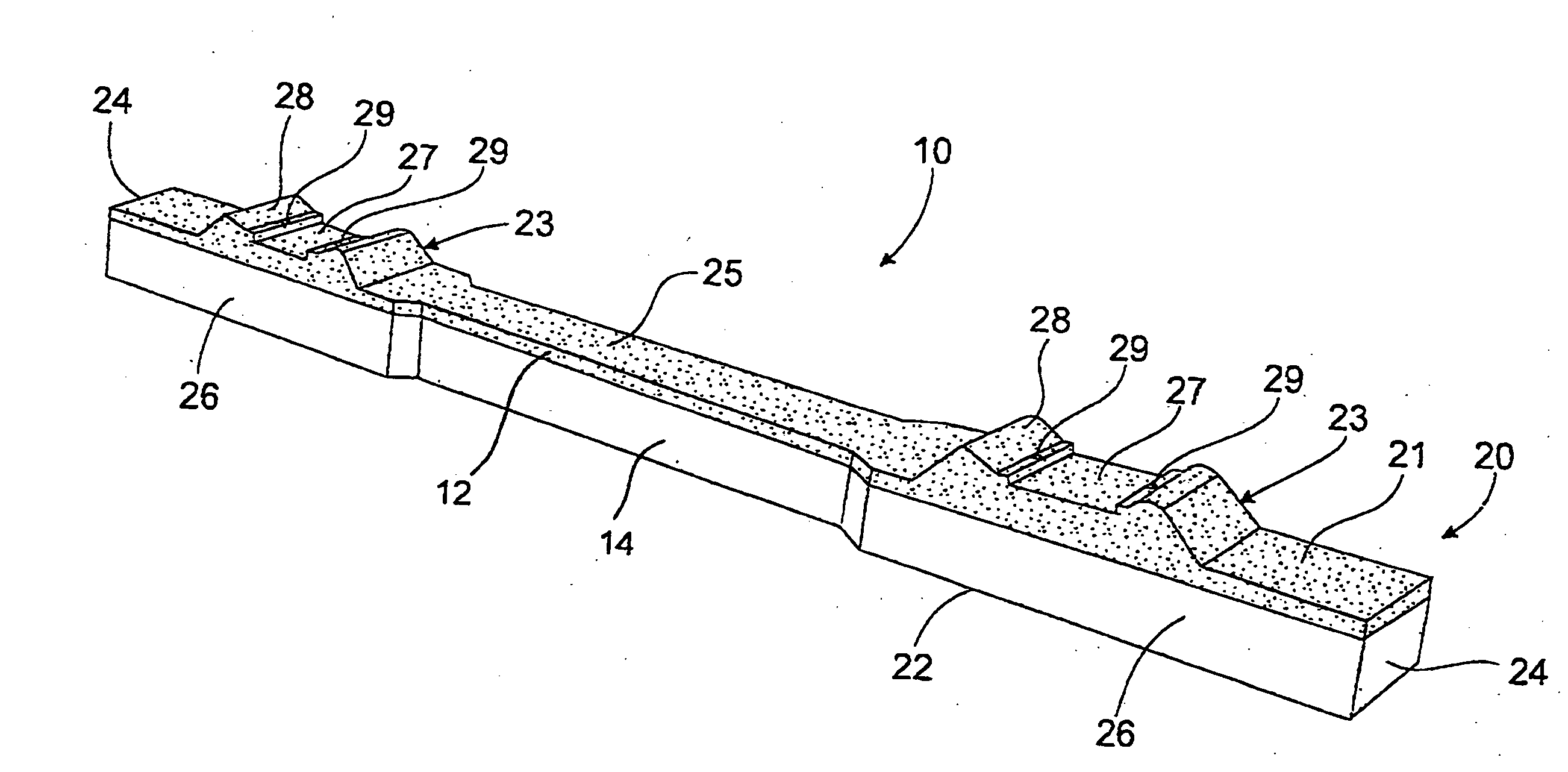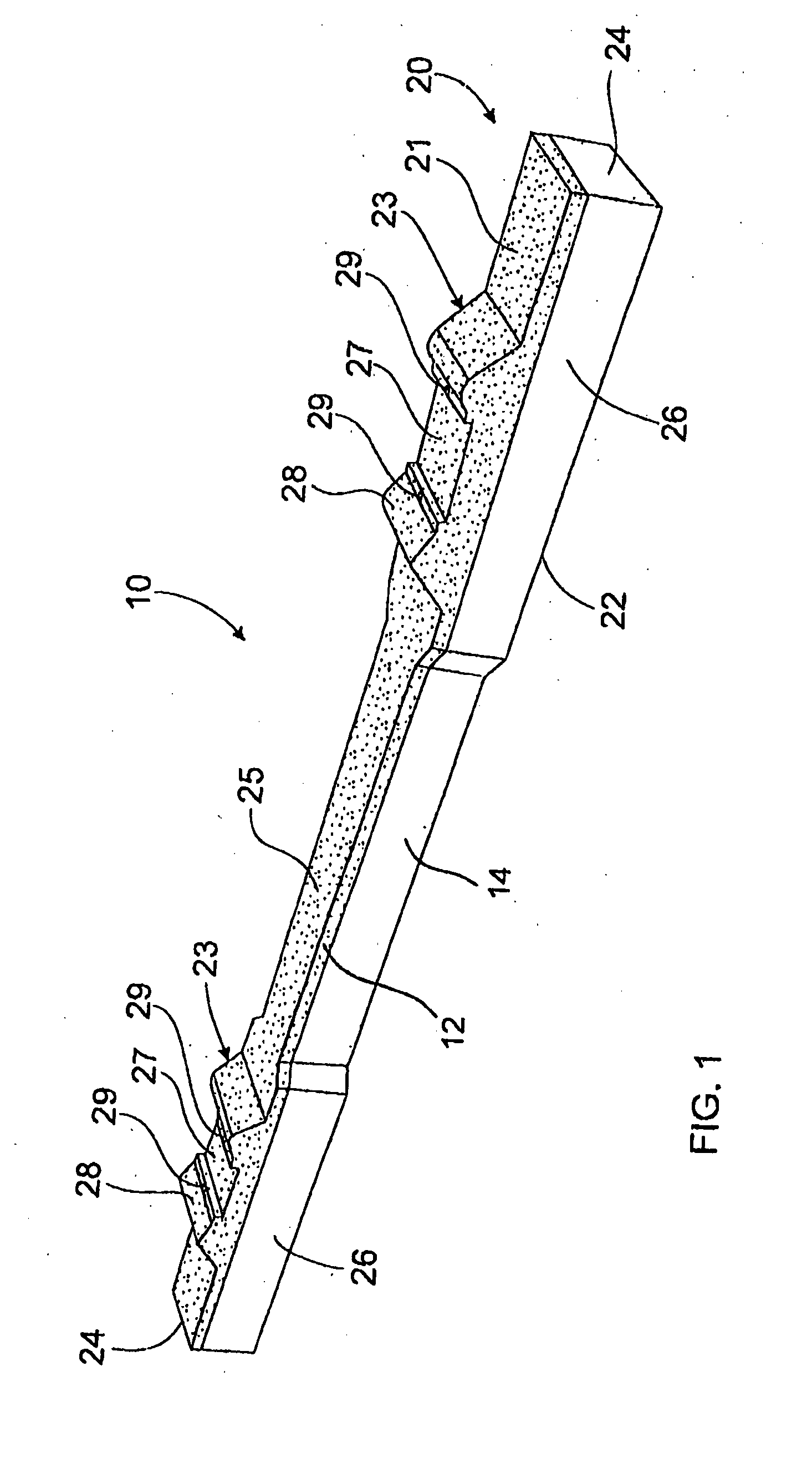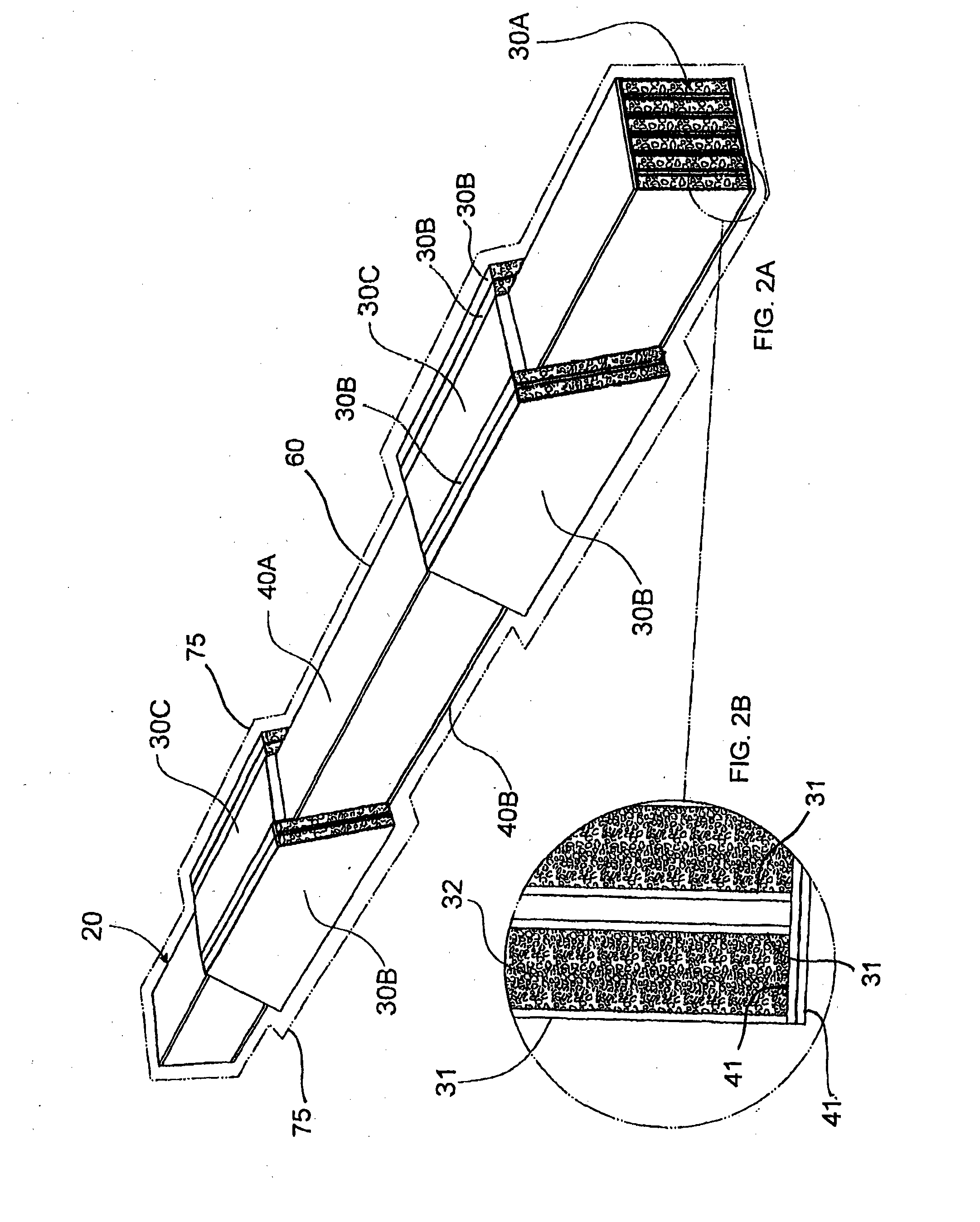A Railway Sleeper
a railway and sleeper technology, applied in the field of railway sleepers, can solve the problems of increasing the cost of railway sleepers, reducing the long-held advantages of high-quality hardwoods, and reducing the supply of high-quality hardwoods,
- Summary
- Abstract
- Description
- Claims
- Application Information
AI Technical Summary
Benefits of technology
Problems solved by technology
Method used
Image
Examples
Embodiment Construction
[0064]FIGS. 1 and 2 show a railway sleeper 10 that can be used for replacement of a timber sleeper. The sleeper 10 is constructed from a body 20, a series of sandwich panels 30 and two sheet-like fibre composite members 40A and 40B.
[0065]The body 20 is constructed from polymer concrete into which is embedded reinforcements. The body has a top face 21 for placement of a railway rail and a bottom face 22 which in use of the railway sleeper. 10 bears onto a bed of ballast, typically coarse graded rock. The railway sleeper 10 has two rail seats 23, two ends 24 and a middle section 25. A pair of wings 26 extend sideways from the body 20 adjacent each rail seat 23. Each rail seat 23 has a recess 27 with two raised portions 28 extending away from the recess 27. A fastening hole 29 is located adjacent each of the raised portions for engagement with a fastener.
[0066]The polymer concrete which forms an upper part of the body 20 is formed with approximately 28% by volume of epoxy resin includi...
PUM
| Property | Measurement | Unit |
|---|---|---|
| depth | aaaaa | aaaaa |
| size | aaaaa | aaaaa |
| specific gravity | aaaaa | aaaaa |
Abstract
Description
Claims
Application Information
 Login to View More
Login to View More - R&D
- Intellectual Property
- Life Sciences
- Materials
- Tech Scout
- Unparalleled Data Quality
- Higher Quality Content
- 60% Fewer Hallucinations
Browse by: Latest US Patents, China's latest patents, Technical Efficacy Thesaurus, Application Domain, Technology Topic, Popular Technical Reports.
© 2025 PatSnap. All rights reserved.Legal|Privacy policy|Modern Slavery Act Transparency Statement|Sitemap|About US| Contact US: help@patsnap.com



